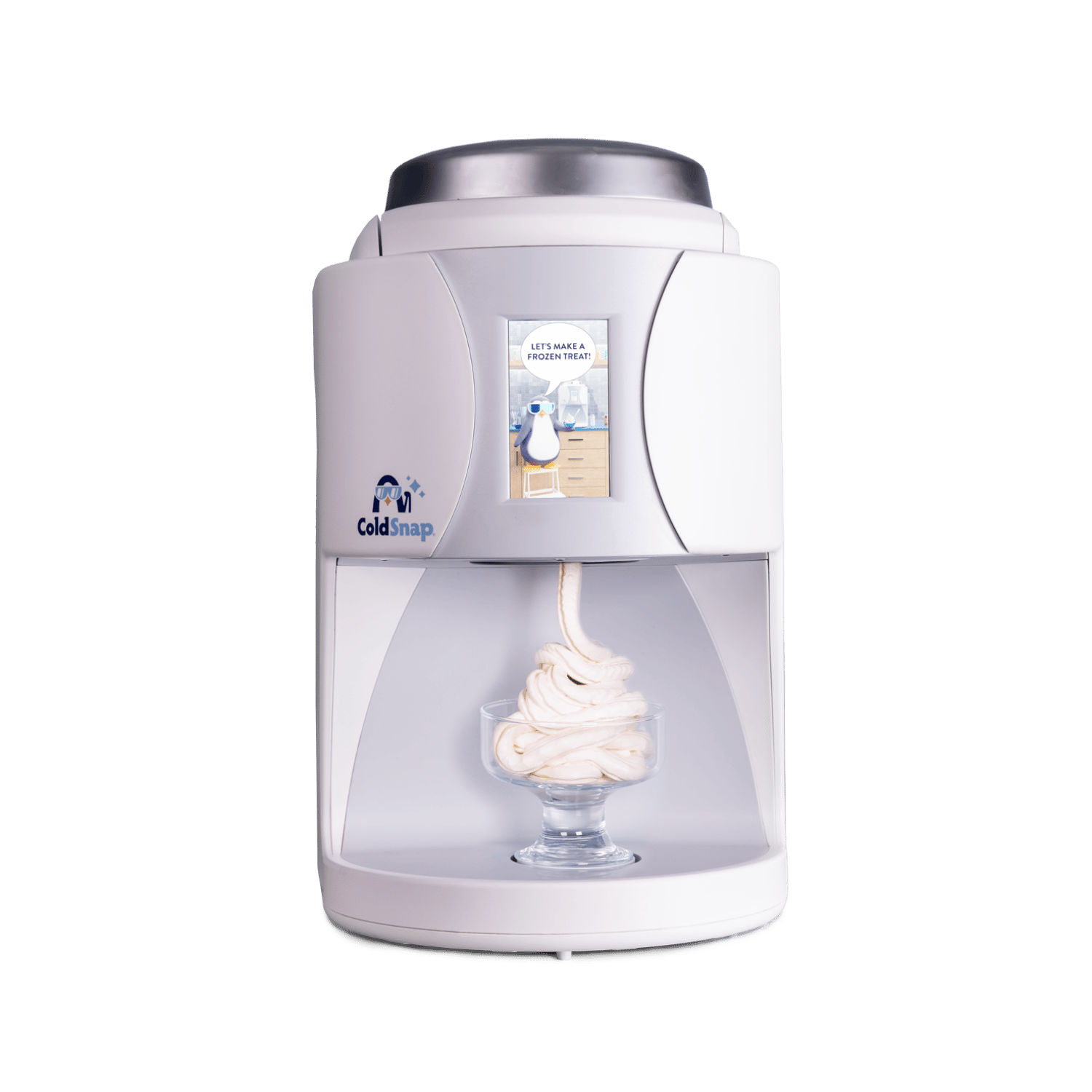Imagine reaching into your freezer, expecting a scoop of your favorite ice cream, only to find it soft and melting. It’s disappointing, isn’t it?
You’re not alone. Many people face this puzzling issue where their freezer just doesn’t seem to keep ice cream frozen. This could be more than just a minor inconvenience—your freezer might be trying to tell you something. Understanding why this happens can save you from future frustrations and keep your desserts perfectly chilled.
So, why exactly is your freezer failing at its most basic job? Dive in as we uncover the surprising reasons and simple solutions to ensure your ice cream stays deliciously frozen.
Common Causes Of Ice Cream Melting
Is your ice cream melting instead of staying frozen? Many face this issue with freezers. Understanding common causes helps you fix this problem easily. Let’s dive into some frequent reasons why ice cream might melt in your freezer.
Temperature Settings Issues
The freezer temperature might be set too high. Ice cream needs a cold environment to stay solid. Check your freezer’s temperature setting. Ensure it is below 0 degrees Fahrenheit. This keeps your ice cream frozen and delicious.
Overloading The Freezer
Too many items in the freezer can block airflow. Ice cream needs proper air circulation to stay frozen. Arrange items to allow air movement. Avoid stuffing the freezer full. This helps maintain a consistent cold temperature.
Frequent Door Opening
Opening the freezer door often lets warm air in. This raises the temperature inside. Ice cream starts to melt quickly when exposed to warm air. Limit how often you open the door. Close it quickly to keep the cold air inside.

Credit: coldsnap.com
Freezer Malfunctions
Freezer malfunctions can ruin your ice cream dreams. Nothing is worse than grabbing a bowl of ice cream and finding it melted. Several issues can prevent freezers from keeping their contents frozen. These range from simple mechanical problems to larger system failures.
Understanding these issues can help you troubleshoot and fix the problem. Let’s explore some common freezer malfunctions that might be affecting your ice cream.
Faulty Thermostat
The thermostat controls the freezer’s temperature. A faulty thermostat can lead to incorrect temperature settings. This means the freezer might not be cold enough to keep ice cream frozen. Check if the thermostat is set properly. If not, it might need replacement.
Broken Seal Or Gasket
The seal or gasket keeps cold air inside the freezer. If it’s damaged, warm air can enter, causing ice cream to melt. Inspect the seal for cracks or gaps. A broken seal needs repair or replacement to ensure the freezer works efficiently.
Defective Fan Or Motor
The fan and motor circulate cold air inside the freezer. If either is defective, cold air distribution is compromised. Ice cream might not receive enough cold air to stay frozen. Listen for unusual noises from the fan or motor. Repairing or replacing these parts can restore proper airflow.
Environmental Factors
Warm temperatures near the freezer can affect its ability to keep ice cream frozen. Another reason could be frequent door opening, causing cold air to escape. Finally, an overloaded freezer might block air circulation, impacting its cooling efficiency.
When your ice cream turns into a sad, soupy mess instead of maintaining its delicious, frozen form, the culprit might not always be your freezer. Environmental factors can play a significant role in how well your freezer performs its job. Understanding these factors can help you take action to ensure your sweet treats remain perfectly frozen.Room Temperature
The temperature of the room where your freezer is located can have a surprising impact on its efficiency. A room that’s too warm can cause the freezer to work overtime, struggling to maintain its cool interior. If your kitchen or storage area frequently reaches high temperatures, consider relocating your freezer to a cooler spot.Humidity Levels
Moisture in the air can be a sneaky enemy to your freezer’s effectiveness. High humidity levels can lead to frost build-up inside the freezer, which can act as an insulator, making it harder for the freezer to keep everything cold. Keep an eye on your freezer’s interior for signs of frost and consider using a dehumidifier if you live in a particularly humid climate.Proximity To Heat Sources
Placing your freezer near heat-generating appliances like ovens or dishwashers can be a recipe for disaster. These heat sources can elevate the surrounding temperature, forcing your freezer to work even harder. Think about the layout of your kitchen—are you inadvertently making your freezer’s job more difficult? Have you noticed these environmental factors impacting your freezer’s performance? Adjusting these conditions might just be the key to keeping your ice cream at its chilly best.
Credit: www.venturepak.co.uk
Maintenance Tips
Keeping your freezer in top condition ensures your ice cream stays frozen. Simple maintenance can prevent unwanted meltdowns. Addressing common issues might help you enjoy your sweet treats without worry. Below are a few tips to maintain your freezer effectively.
Regular Cleaning
Clean the freezer interior every month to keep it efficient. Remove food debris and spills to prevent odors and bacteria. Use a mild detergent and warm water for best results. This keeps surfaces clean and reduces ice cream mishaps.
Checking For Ice Build-up
Excess ice can block air vents and reduce cooling efficiency. Check for ice build-up monthly. Defrost if ice layers are over half an inch thick. This improves airflow and cooling power. Your ice cream stays frozen longer.
Inspecting Door Seals
Door seals play a crucial role in maintaining cold temperatures. Check for any gaps or wear in the seals. Use the dollar bill test: close the door on a bill. If it slips out easily, the seal needs replacing. A tight seal ensures consistent cooling. Your ice cream will thank you.
Solutions To Try
Check the freezer’s temperature settings; they might be too high. Ensure the door seals tightly without gaps. Consider rearranging items to improve cold air circulation around the ice cream.
Is your ice cream turning into a soupy mess instead of staying deliciously frozen? It can be frustrating when the freezer doesn’t do its job, especially when you’re craving a sweet, cold treat. Luckily, there are practical solutions you can try to help your freezer keep your ice cream perfectly frozen.Adjusting Temperature Settings
Sometimes the simplest solution is the most effective. Check your freezer’s temperature settings. Ideally, your freezer should be set to 0°F (-18°C) for optimal ice cream preservation. If it’s set higher, your ice cream might not freeze properly. Adjust the dial and wait a few hours to see if the situation improves. A little tip: avoid constantly opening the freezer door. Each time you do, warm air enters and disrupts the internal temperature. If you’re like me and tend to forget this, jot down a reminder near the freezer.Reorganizing Freezer Contents
The way you organize your freezer can impact its performance. Ensure there’s enough space for air to circulate around your ice cream. Crowding can block cold air from reaching all corners, leading to uneven cooling. If your ice cream is stored near the door, try moving it to the back where it’s colder. Think about your freezer like a city—each item has its own neighborhood. Keeping it organized not only helps with cooling but also makes finding your favorite ice cream flavor a breeze.Repair Or Replace Faulty Parts
If adjusting settings and reorganizing don’t work, there might be a mechanical issue. Common culprits include faulty door seals or a malfunctioning thermostat. Inspect the door gasket for any gaps or tears. You can test it by closing the door on a piece of paper; if you can easily pull it out, the seal might need replacing. When my freezer was on the fritz, a simple gasket replacement solved the problem. However, if you’re not handy or the issue is more complex, consider calling a professional. Sometimes investing in a repair can save you from the hassle of buying a new freezer. Are you ready to try these solutions and enjoy your perfectly frozen ice cream again? Remember, a well-maintained freezer is the secret to keeping your treats just as you love them.
Credit: gosun.co
When To Call A Professional
When your freezer fails to keep ice cream frozen, it’s not just a minor inconvenience; it might be a sign that something serious is wrong. While some issues can be resolved with a little DIY troubleshooting, there are times when you should consider calling in a professional. But how do you know when it’s time to make that call?
Signs Of Serious Malfunctions
If your freezer frequently cycles on and off, it’s a red flag. This erratic behavior can lead to fluctuating temperatures, which is bad news for your ice cream. Another sign is if the freezer is making strange noises, like banging or buzzing. These sounds could indicate mechanical issues that need expert attention.
Are you noticing frost buildup inside the freezer? While a little frost is normal, excessive frost could point to a faulty defrost system. Additionally, if the interior temperature of the freezer is consistently above 0°F (-18°C), it’s not performing efficiently. In these cases, consulting a professional can prevent further damage and loss of your frozen goods.
Cost-benefit Analysis Of Repairs
Before calling a technician, consider the age and condition of your freezer. If it’s an older model, repairs might be more frequent and costly. In contrast, newer models may still be under warranty, making repair costs negligible. Calculate the potential repair costs against the price of a new freezer.
Think about energy efficiency as well. Older freezers often consume more electricity. A repair might solve a short-term issue but not address long-term inefficiencies. Would upgrading to a more energy-efficient model be a smarter investment?
Finding Qualified Technicians
Choosing the right professional can make all the difference. Look for technicians with certifications from reputable organizations like the EPA or NATE. These qualifications ensure that they are trained to handle refrigeration issues correctly.
Reading reviews and asking for recommendations can also guide you in finding a reliable technician. Word of mouth often reveals hidden gems in the service industry. Don’t hesitate to ask potential technicians about their experience with your specific freezer model to ensure they’re well-equipped to handle the repair.
When was the last time you assessed your freezer’s performance? If you find yourself frequently adjusting the temperature or dealing with melted ice cream, it might be time to consult a professional. Remember, acting promptly can save you money and stress in the long run.
Frequently Asked Questions
Why Is My Ice Cream Melting In The Freezer?
Your freezer might be set too high. Lower the temperature setting. This should keep your ice cream frozen.
Could A Faulty Gasket Affect Freezing?
Yes, a faulty gasket lets warm air in. Check and replace it to maintain freezing temperatures.
Is Overloading The Freezer Causing Issues?
Absolutely. Overloading blocks air circulation. Rearrange items to allow proper airflow around your ice cream.
Does Frequent Opening Of The Freezer Impact Freezing?
Yes, frequent opening lets warm air enter. Limit how often you open the freezer door.
Are Power Outages Affecting Freezer Performance?
Definitely. Power outages can raise the temperature. Ensure your freezer regains proper cooling afterward.
Conclusion
Solving freezer issues can keep your ice cream frozen. Check your freezer’s temperature settings. Regular maintenance helps ensure optimal performance. Clean coils and vents for better cooling. Organize items to allow air flow. Avoid overloading the freezer. Use a thermometer to verify the temperature.
Fix door seals if needed. These steps help maintain a consistent cold environment. Enjoy perfectly frozen ice cream every time. Share your favorite tips and experiences. Keep your freezer running smoothly for all your frozen treats.




